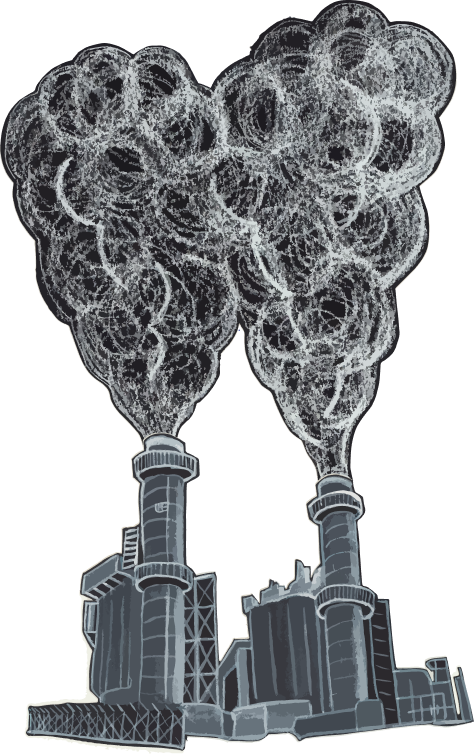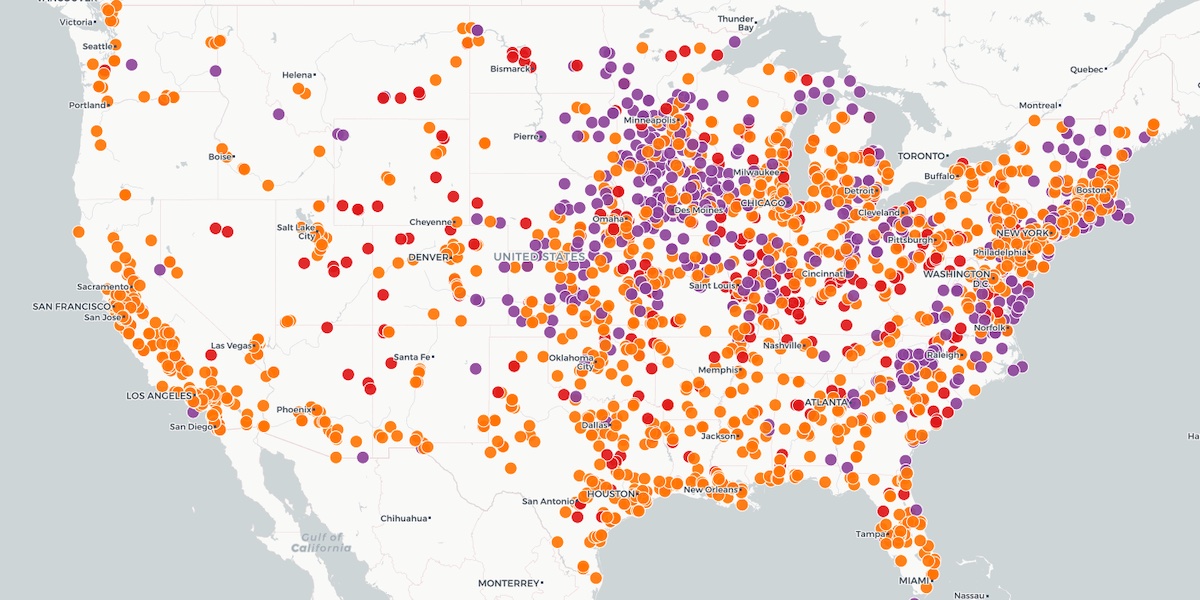Idaho
Back to mapTo get to zero by 2050, Idaho must cut emissions by 3.7% a year
Emissions in Idaho
Million metric tons of carbon dioxide (CO2) [?] equivalent (MTCO2e [?]) emissions
Note: Grey area indicates missing data due to processing delays.
Source: WRI, Mar 2021
This is how we're going to do it
- Boilers and furnaces with heat pumps [?]
- Gas stoves with electric induction stoves [?]
- No-till farming to keep CO2 in the soil
- Capturing methane leaks from landfills
- Capturing CO2 to make emissions-free concrete
- Burning green hydrogen to make emissions-free steel
- Plugging methane leaks from gas pipelines
Decarbonize Our Buildings
10% of Idaho's climate pollution comes from buildings.
We burn fossil fuels to heat our air, water, and food.
To cut this pollution...
Let's electrify our heat!
We'll replace...
...in all of Idaho's 942,000 buildings.
In fact, 38% of appliances in buildings in Idaho are already fossil fuel free!
That means we only need to electrify the remaining 583,000 dirty buildings in Idaho. That's around 22,000 per year.
Source: Microsoft, Mar 2021; NREL, Dec 2021Electrifying all buildings cuts 10% of the pollution.
Decarbonize Our Transport
32% of Idaho's pollution comes from cars, trucks, trains, and planes.
But mostly from cars.
To cut this pollution,
your next car must be electric.
Or consider going car-free with public transit, bikes/e-bikes, car share, or other alternatives!
There are 588,000 vehicles in Idaho and 2,000 are already electric (0.4% of the total).
We need to electrify (or replace) the remaining 586,000 gas-powered vehicles. That's around 22,000 a year.
Source: DOT, Feb 2021Electrifying all transportation cuts 32% of the pollution.
Decarbonize Our Power
4% of Idaho's pollution comes from burning coal, gas, and oil to make power.

To cut this pollution...
Put solar panels on your roof!
Then, we'll replace all fossil fuel power plants with solar and wind farms.

...and find good jobs for those workers.
Current Fossil Fuel Power Plants in Idaho
8 gas plants
Bennett Mountain Power Project
Elmore County
393 MW
Langley Gulch Power Plant
Payette County
319 MW
Rathdrum Power, LLC
Kootenai County
302 MW
Evander Andrews Power Complex
Elmore County
271 MW
Rathdrum Combustion Turbine Project
Kootenai County
166 MW
Amalgamated Sugar Twin Falls
Twin Falls County
10 MW
Amalgamated Sugar LLC Nampa
Canyon County
9 MW
BYUI Central Energy Facility
Madison County
6 MW
1 oil plant
Salmon Diesel
Lemhi County
5 MW
But wait!
It's not enough to replace our power plants with wind and solar farms.
To power our electric cars and buildings, we need two times the electricity we have today.
In all, we'll need to build 2,000 megawatt (MW) [?] of wind power and 1,000 MW of solar power.
Since the average wind turbine provides 2.75 MW of peak capacity, Idaho would need to install about 600 turbines.
Since Idaho already has 303 MW of wind and 78 MW of solar, that's 1,000 MW of wind power we need to build and 1,000 MW of solar power. That's around 50 MW of wind power and 49 MW of solar power a year.
Source: EIA, Apr 2022Decarbonizing all dirty power cuts 4% of the pollution.
And gives us zero-emissions power we need to eliminate pollution from buildings and cars!
Other Emissions
The last 54% of Idaho's climate pollution comes from other sources...
This includes farming, landfills, industry, and leaks from gas pipelines.
There's no one solution to solve these problems, but there are lots of great ideas:
That doesn't mean there's no solution, it just means that clean electrification [?] doesn't help with these problems, and you could fill a whole book with covering all of them. We need to encourage our politicians to invest in researching new solutions and implementing existing solutions to these problems!
Ready to do your part?
Learn how to electrify your own machines and pass local policy to electrify the rest
Take Action